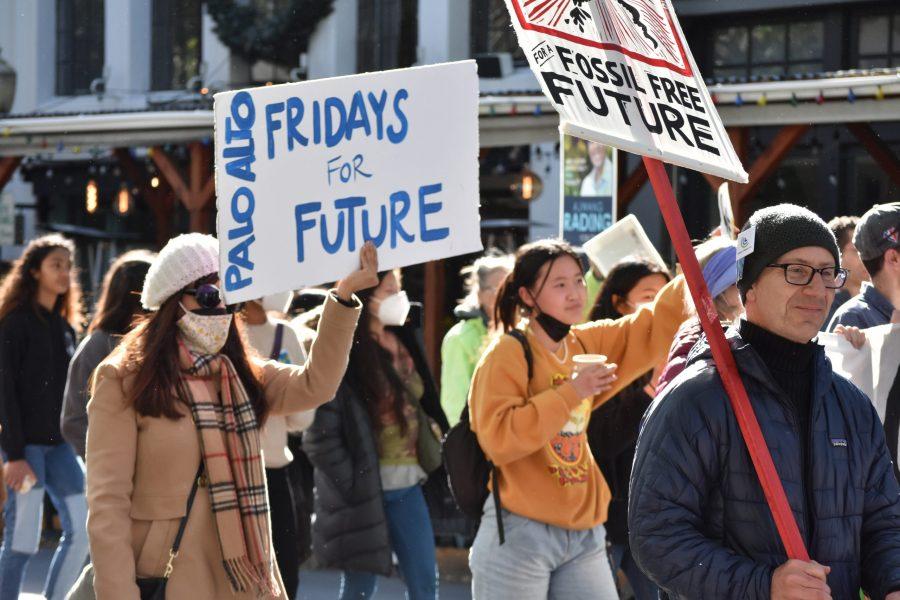Activists and Bay Area students gathered outside Palo Alto City Hall on April 22 to rally for climate action in celebration of Earth Day.
Climate advocate and Gunn senior Saman de Silva co-organized and spoke at the rally . In a lawyer interview, he said he believes Earth Day is an important day for our community because it prompts the community to make changes that will positively affect the climate.
“Earth Day is just a reminder every year that progress is not finished,” de Silva said. “It’s a great place to restore hope and to inspire people.”
Jo Gardias, a member of the climate nonprofit 350 Silicon Valley, added that the Earth Day rally was a great way to unite the community in environmental action.
“It’s an easy way for the public to get engaged,” Gardias said. “Also, it’s an easy way for activists to help funnel people who might be worried or anxious about climate action.”
However, as constructive as the rally was for raising environmental awareness and bringing together climate supporters, de Silva said the community needs to take action throughout the year, beyond just celebrating Earth Day.
“I think the drawback of Earth Day is that it puts all the hope into one short time, and then people kind of lose that year-round,” de Silva said, “But I think that’s a problem to face later down the road. I’d say it’s a really really great short term solution.”
Junior Katie Reuff, another Gunn environmentalist who co-organized the event, spoke about the importance of young peoples’ participation in environmental action. She said it’s more important than ever to get youth involved in the climate solution.
“There’s this (saying that) the youth are our future, and it’s true,” Reuff said. “It has to be us who take the first step to engage in (climate) action because this is going to be our planet, and we might as well take charge right now.”
Reuff also said it is easier than ever for students and adults to become more involved in saving the planet.
“Whether you’re interested in AI or farming, there’s so many different ways to channel your passions (through) a sustainable lens,” Reuff said. “Even if it’s not your main focus, you can find different ways to sneak environmental action into it.”
For Bay Area students, especially, de Silva said it’s important to get involved in climate action because they have some of the highest rates of environmental education and desire to keep our planet healthy.
“Climate anxiety is, as a proven psychological research field, more rampant in young people, especially in developed nations and high-income backgrounds,” de Silva said. “That’s basically describing most students who go to PAUSD.”
And for students who may feel this sort of climate anxiety, de Silva said they can harness their concerns to create meaningful change in the community.
“Climate anxiety is really unproductive when you just sit on it and feel hopeless about existential apocalypse,” de Silva said, “But when you can leverage that to go make change, … I think it weaponizes our anxiety into something very, very productive for society.”
For those who may not want to or are unable to become involved in advocacy, Gardias said there are also simpler ways to be sustainable through making minor changes in everyday practices and supporting climate action through politics.
“One (thing you can do) is decarbonize your personal footprint,” Gardias said. “So driving an electric vehicle or driving less and electrifying your home.”
That being said, De Silva said that many people who support climate action in theory find it difficult to implement change in practice.
“I think we can agree that climate change is bad. There are very few people in Palo Alto who would say that the climate is not shaken, (and) we don’t need to change some sort of thing to adapt to the environment,” de Silva said. “I think when push comes to shove though, you have to choose what you stand for. And I honestly accept that not everybody can stand for the climate if they’re standing so actively for other things.”

